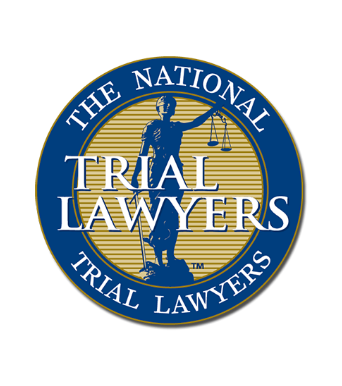Chillum, MD Medical Malpractice Lawyer
Medical malpractice is a serious issue that can occur when a healthcare professional fails to meet the accepted standards of care and harms a patient. This type of negligence can take many different forms and often leads to severe damages.
If you have been injured because of medical malpractice, you are entitled to compensation for your injuries. Different types of damages can be compensated, including medical expenses, lost wages, pain and suffering, and other related expenses. However, getting paid for these damages can be challenging without the assistance of a dedicated legal team. In many cases, it can be difficult to prove that a healthcare provider’s care fell below the accepted standard, and strict deadlines for filing a lawsuit typically apply. Despite these challenges, you have the right to seek compensation for your current losses and any future expenses stemming from the negligence.
For a free case review with our medical malpractice attorneys, call Rice, Murtha & Psoras at (410) 694-7291.
How Medical Malpractice is Defined in Chillum, MD
Medical malpractice is a deeply concerning issue that affects many patients across Chillum. This legal term refers to situations where a healthcare provider deviates from the standard of care in the treatment of a patient, leading to harm or injury. These cases can be notoriously challenging, but our medical malpractice attorneys have spent years proving the liability of doctors and hospital staff. Medical malpractice typically occurs when a healthcare professional fails to provide the standard of care that a reasonably competent healthcare provider, in a similar situation, would have provided.
The standard of care is determined based on the practices and protocols that are widely accepted by the medical community. It encompasses the knowledge, skill, and care ordinarily exercised by practitioners in a similar field under similar circumstances.
To establish a medical malpractice claim in Chillum, you must demonstrate several key elements. These include proving that a doctor-patient relationship existed, the healthcare provider breached the standard of care, the breach directly caused the injury, and the injury resulted in damages.
However, expert testimony is often required to establish the standard of care and to demonstrate how the provider’s actions deviated from this standard. Medical experts in the same field as the defendant are typically called upon to explain the intricacies of the care that should have been provided under the circumstances.
Common Examples of Medical Malpractice in Chillum, MD
Medical malpractice can encompass a wide range of medical errors, making these cases difficult. However, certain patterns have emerged that help our team narrow down liability. The following are common examples of medical malpractice that you can pursue compensation for in Chillum:
Misdiagnosis
Misdiagnosis stands as a prominent issue within the realm of medical malpractice. The failure to correctly identify a patient’s condition can lead to unnecessary or harmful treatments while allowing the actual disease to progress unchecked.
Of course, misdiagnosing serious conditions such as strokes, heart attacks, or internal injuries can have dire consequences for patients. The challenge in proving misdiagnosis lies in demonstrating that another competent physician, under similar circumstances, would not have made the same error, thereby breaching the standard of care expected in the medical community.
Medication Errors
Medication errors encompass a range of mistakes, including prescribing the wrong medication, dispensing an incorrect dosage, or failing to recognize harmful drug interactions. These errors can result from a breakdown in communication among healthcare providers or between providers and pharmacists, leading to adverse patient outcomes. To establish liability, victims must prove that the error deviated from standard practice and directly caused harm.
Surgical Errors
Surgical errors are among the most dramatic and distressing forms of medical malpractice. They can include operating on the wrong body part, leaving surgical instruments inside the patient, or performing the wrong procedure altogether.
For instance, “never events” like wrongful amputation are egregious examples of surgical errors. Such incidents are clear violations of the standard of care, often resulting in straightforward liability but devastating physical and emotional impacts on patients.
Childbirth Errors
Childbirth errors can result in life-altering consequences for both the newborn and the mother. Common issues include failing to anticipate birth complications, improper use of delivery tools, or neglecting to address fetal distress. Legal claims usually focus on the long-term care needs of the child and the emotional trauma experienced by the family.
No Informed Consent
The principle of informed consent requires that patients be fully aware of the risks, benefits, and alternatives to proposed medical treatments or procedures. Failure to obtain informed consent before proceeding with a treatment plan can constitute medical malpractice if the patient suffers an adverse outcome they were not made aware of as a possibility. This aspect of malpractice emphasizes the patient’s autonomy and right to make informed decisions about their healthcare.
Anesthesia Errors
While less common, anesthesia errors can cause severe patient harm, including brain damage or death. Errors might involve administering too much or too little anesthesia, failing to monitor the patient’s vital signs, or neglecting to account for a patient’s medical history and potential allergies. The complexity of anesthesia administration means that errors often result from a breakdown in communication or protocol adherence among the surgical and anesthetic teams.
Evidence that Can Help Prove a Medical Malpractice Claim in Chillum, MD
Medical records are the cornerstone of any medical malpractice claim. These documents provide a detailed account of the patient’s health condition, the treatments administered, and the healthcare professionals involved. They include hospital records, doctor’s notes, nursing logs, diagnostic test results, medication records, and any other documentation related to the patient’s care. Analyzing these records can help identify discrepancies or deviations from standard treatment protocols, serving as a direct indicator of potential negligence.
Because of the specialized knowledge required to understand medical practices and standards, expert testimony is also often necessary to establish what the appropriate standard of care should have been in a given situation. Experts, usually experienced practitioners in the same field as the defendant, can explain complex medical procedures and conditions in a way that is understandable to a lay audience. They can also offer opinions on how the defendant’s actions deviated from accepted medical practices and contributed to the patient’s harm.
In some cases, photographic or video evidence might be available and relevant. This could include photos or videos of the patient’s condition before and after the alleged malpractice, which can visually demonstrate the extent of the injuries or harm suffered. Additionally, surveillance footage from hospitals or clinics might capture crucial interactions or events related to the case.
Lastly, any correspondence between the patient and healthcare providers can also serve as evidence. This includes emails, letters, and even text messages discussing the patient’s care, complaints about the treatment received, or responses from healthcare providers addressing concerns. Such communications can reveal how providers reacted to complaints and whether there were acknowledgments of issues or errors in care.
Our Chillum, MD Medical Malpractice Attorneys Can Help Get the Justice You Deserve
Contact Rice, Murtha & Psoras today at (410) 694-7291 to receive your free case assessment with our medical malpractice lawyers.













